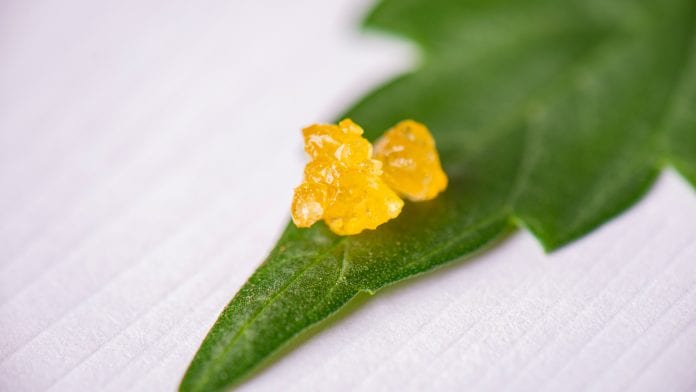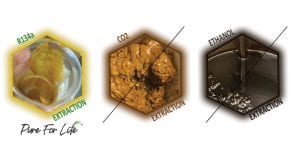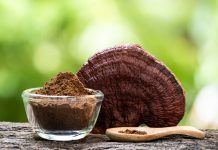
PURE5 powered by COMERG offers innovative emerging solutions for the safe, clean extraction of high-quality cannabis product.
Cannabis oils, also called terpenes, are derived from the cannabis plant (cannabis sativa). It grows wild in many tropical and modest temperate areas around the world; and can be cultivated in almost any climate. Two main species may be recognised: cannabis sativa, a low-tetrahydrocannabinol (THC) subspecies of cannabis which is native to Central and Eastern Europe and Russia; and cannabis indica, which produces large amounts of THC.
Higher concentrations of THC provide euphoric and intoxicating effects, making it popular for use both as a recreational and medicinal drug. The indica strain takes its name from the Hindu-Kush Mountain range where it has been originally discovered. Because of the often harsh and variable climate of those parts (extremely cold winters and warm summers), indica is well suited for cultivation in temperate climates.
The ‘entourage effect’
The phrase ‘entourage effect’ was introduced in 1999; and refers to the way in which multiple endogenous chemical species display a co-operative effect in eliciting a cellular response. The term has evolved to describe the polypharmacy effects of combined cannabis phytochemicals or whole plant extracts; and now commonly refers to the compounds present in cannabis supposedly working in concert to create ‘the sum of all the parts that leads to the magic or power of cannabis’.
More than 75 known cannabinoids are present in the cannabis plant, each of which performs specific functions in stimulating certain cells. For example, CBD stimulates the collagen; CBG stimulates the stem cells; THCV stimulates the peripheral nervous system; and THC stimulates the central nervous system. Other cannabinoids, terpenoids and flavonoids may contribute to the entourage effect, which is considered a possible cannabinoid system modulator and contributes to pain management.
Consider the role of terpenes, for example. Terpenes are volatile aromatic molecules that evaporate easily and readily announce themselves to the nose. Marijuana’s compelling fragrance and particular psychoactive flavour are determined by the predominant terpenes in a strain.
There are over 3,000 terpenes in the world, 400 of which have been found in cannabis. 70 of these terpenes are identified as cannabinoids, but only a few of these odoriferous oily substances appear in amounts substantial enough to be ‘nose-worthy’. Among them are monoterpenes, diterpenes; and sesquiterpenes, which are characterised by the number of repeating units of a carbon-5 molecule called isoprene, the structural hallmark of all terpenoid compounds.
The terpenes in marijuana have given the plant an enduring evolutionary advantage: terpenes are the natural hormones of the plant. During the vegetation of the plant the terpenes change from repelling insects and animal grazers, preventing fungus and attracting pollinators from male plant pollination. That is why, when used in proper combinations, terpenes can elevate human emotions as well as modulating the performance of cannabinoids.
Extracting the oils
Various extraction methods used to concentrate and target molecules from plants have been around for centuries. Cannabis extraction processes have adapted different techniques popularly used in today’s agriculture, biopharma and petrochemical industries. There are a few most commonly used extraction methods used in the creation of cannabis crude oil: CO2, hydrocarbon and ethanol. Each of these methods has its own set of pros and cons, as outlined in detail below.
CO2 extraction

One of the most popular methods of cannabis extraction is through the use of CO2 as a solvent. This method takes advantage of the supercritical properties of CO2 gas to strip materials from botanical substances. This method of extraction has been used by a variety of industries before it was applied to cannabis, including in the production of perfumes and essential oils – although cannabinoids have a different molecular structure to essential oils and they cannot be extracted together.
That is why extracting the cannabis oils with CO2 is by running supercritical extraction and the terpenes by running subcritical extraction which makes the process quite long. CO2 is a low density gas and needs to be pressurised to about 600 atmospheres to become a solvent for those thicker oils. That is why, due to the process architecture, scaling the CO2 system and operation is an expensive process. Using CO2 requires post-extraction lipid and wax separation by use of lipophilic solvent as ethanol which adds additional cost and time to the process.
Hydrocarbon extraction
Hydrocarbon extraction uses a hydrocarbon, such as butane or propane, as a solvent. The hydrocarbon is washed over the plant matter in order to break it down, before ultimately concentrating a targeted molecule and removing it from the biomass. Hydrocarbon extraction has become popular due to its efficiency in the areas where CO2 falls short. It has a higher yield rate, preserves different terpenes than other methods; and equipment is affordable, although the solvent boiling point is still high enough to require solvent vacuum purging and remediation.
Overall, this method of extraction is preferable, but also comes with its own set of drawbacks. Chemicals like butane are volatile gases and obviously have a high potential for combustion and flammability, resulting in zoning and storage limitation laws put in place for safety purposes. Consequently, this creates limitations on scalability for operations looking to expand. If a manufacturer is looking to scale, hydrocarbon extraction is not advised. De-waxing during hydrocarbon extraction is an issue; and secondary solvent dewax will need to be performed in order to remove any stray lipids that made their way into the oil during extraction.
Ethanol extraction
Ethanol is now the preferred method for most hemp extractors because it is simple and scalable. The real advantage to this method is its ability to effectively scale up within manufacturing operations, especially after the extraction has been done with cold ethanol below -40°C. Winterisation uses ethanol and sub-zero temperatures to separate unwanted fats and waxes from the oil: that is why the oil extracted this way is with almost no fats and lipids and looks like post-winterised crude. The major disadvantage of ethanol is that it denatures the oil.
Another disadvantage of ethanol is the high boiling point of around 80°C. This means that in order to be separated from the extract the temperature may exceed 100°C, the boiling temperature of water; so, as a result the separated solvent will be diluted in the plant residual moisture. The boiling point of the terpenes is 120°C to 180°C, which means that the ethanol-water solution will already be contaminated with terpenes and will need to be purified after each run to keep the consistency of the extracts same every time. This process brings a loss of the solvent at around 15% to 20% of the extractor volume at every run which increases the operational cost of the extraction significantly especially when in scale.
New trends
Almost all common methods of extraction involve running processes either at higher pressures and temperatures to allow the dense solvent to extract, or running at low temperatures to avoid drawing fats, lipids and chlorophylls. That presents additional obstacles in the form of decreasing yield, slowed process and increased capital expenditure. We are on a hunt for a better option which will not require putting the solvent in extreme conditions to extract the PURE5 target components, with the goal of utilising alternative processes that can be performed at room temperature and preserve all plant values.
From what we have seen, all the popular methods used in the cannabis extraction have their advantages and disadvantages. The most common drawback of all the above methods is that they focus largely on the extraction of the cannabinoids, calling the cannabinoid mixture a full spectrum oil, and do not really value the presence of terpenes. We intend to analyse all options and propose a simple, safe and repeatable process to deliver full spectrum resin containing all medical values at lowest cost.
PURE5 R134a terpene wash
One other method of cannabis extraction is through the use of a tetrafluoroethane (TFE), R134a, as a solvent. R134a by itself is often used in aerosol products for drug delivery. Products which are extracted using this method are called post-winterised full spectrum oils; the level of wax present in the extract right off the machine is usually less than 5% or even less than 2% in most cases. The process is very similar to CO2 extraction: both methods utilise a gas for extraction and liquefy it when it is in contact with the material.
PURE5 R134a extraction is performed at low pressure and room temperatures to strip the natural oils from the raw cannabis products in a closed loop system. The gas is slightly pressurised, then driven through the plant material and recovered in a separation tank leaving the full spectrum oil behind. PURE5 R134a is safe for human health, nontoxic, FDA approved and qualified as GRAS (Generally Recognised As Safe) under FDA standards. It has also been approved for usage as a solvent in the EU, by EC Directive 2009/32.
R134a extraction is the method PURE5 Extraction by COMERG has pioneered after years of diligent research and prototyping. PURE5 has effectively isolated R134a to be the most appropriate method of primary plant matter extraction. As a primary extraction method it only draws out the terpenes and the heavier resins – in this case, the cannabinoids. COMERG has applied this method to over 150 various herbs before we applied it to the cannabis industry.
COMERG builds ethanol, SHW and steam distillation equipment, but utilising R134a extraction solvent in cannabis production is the preferred extraction method, because it is simple, safe and scalable.
PURE5 is now leading commercial scale extraction by size and speed: currently there are systems available capable of producing to 8000lb per day. PURE5 is paving the way for R134a as a sustainable solution for the production of full spectrum crude cannabis oil.
Dual-solvent wash
A great addition to the use of PURE5 R134a is ethanol as a sequential extraction. The best way to preserve terpenes is to extract them with R134a: all terpenes and live resin can be collected in the space of 10 to 15 minutes. Secondary cold ethanol extraction, lasting a further 30 to 60 minutes, would extract only the cannabinoids, eliminating the need for additional distillation processes.
The PURE5 dual system overcomes the disadvantages of ethanol and CO2 extraction outlined above. In this case, the liquified gas non-polar solvent extracts all volatile substances and terpenes; and the polar solvent extracts all cannabinoids. As the residual water has been removed at the R134a extraction stage as well as all terpenes, the cold ethanol is not contaminated with low temperature volatile substances, and when it is recovered in our closed loop system the loss is significantly less.
Knowing your solvent
Selectivity
When looking at starting an extraction operation, one should consider each of the extraction methods available as part of their overall operation and decide what is best for its operational expense. The foundation of extraction is knowing your solvent and what botanical components it will draw from the plant. That will answer how many post-processing activities you need to do, as well as how much money will need to be spent on equipment and personnel.
It is very important for the extraction artist to understand what each solvent will provide in terms of a consistent end product. There are few clues on how to recognise the individual effects of each solvent: firstly, solvents may be distinguished by molecule polarity. It has been shown that the polar solvents extract much wider regions of the plant botanicals, while the solvents with non-polar molecules will extract more volatile components, such as terpenes and cannabinoids.
Because polarity is a very wide topic and the solvent behaviour is not consistent, changing depending on temperature, pressure and purity, another way to determine a solvent’s properties is to compare the solvents by dielectric constant. The dielectric constant of water is around 80; ethanol around 25; R134a around 7. These constant changes depending on temperature; for example, the dielectric constant of water changes between 90 and 30 between temperatures of 0°C and 150°C. The diagram below shows the varying behaviours of solvents toward the botanical substances dissolved in them:
The figure above shows that the range of organic substances each solvent draws from the plant matter depends on the polarity. The right solvent is of major importance for extraction of the true full spectrum resin. There are oil soluble compounds (red), alcohol soluble compounds (pink) and water-soluble compounds (blue) in the plants, which is why each industry selects its solvent base in terms of the compound which must be extracted.
Extraction of oils uses solvents with dielectric constants of less than 15, extracting alcohol soluble compounds requires solvents with dielectric constant between 15 and 50; and extracting water soluble compounds necessitates a dielectric constant over 50. Neither steam nor CO2 is an efficient method for extraction of terpenes: R134a extraction is the best way to preserve all the terpenes as they exist in the plant, without additional post-processing and chemical treatment.
While CO2 and hydrocarbon extraction methods both produce acceptable results in the creation of cannabis concentrates, the post-processing and filtration requirements during the dewaxing or winterisation processes create issues for commercial producers when attempting to scale up their operations.
Terpenes
Due to the exceptional performance of R134a in extracting terpenes, we have created our Pure Botanical Extraction (PBXTM) process to deliver the highest concentration of terpenes. The PBXTM extraction process employs a low pressure, room temperature, non-polar fluorocarbon solvent allowing us to capture every potential terpene along with elemenes and ketones, all suspended in the natural oils from the hemp flowers.
What is unique here is that the extracted terpene profile repeats the exact flower terpene profile in approximately 30 times greater concentration. The additional two terpene profiles detected in oil were below the detection threshold in the flower; and were detected in the extract after it had been concentrated. As the extraction is carried out at room temperature, there is no destruction of existing terpenes or new byproducts created in the process. That means that the experience of using the flower in any delivery form – either vape, supplement or topical – will be directly comparable to that of the plant itself, maintaining the terpene, enzymatic and mineral content intact.
Myrcene, caryophyllene, humulene, pinene and linalool are more common amongst hemp flowers, however the quantity present in Lifter makes this a very complex flower profile which can yield superior entourage effects.
Live Resins
The live resin is the most unaltered form of the cannabis oil, where all constituents are extracted as they occur in the plant at room temperature and all terpenes are collected without degradation caused by the processing. Typical uses include internal intake as a medicinal supplement and vaping. A concentrate is activated full spectrum oil with concentration of around 70-80% used in preparation of supplements.
The true health values of the plant are in the terpene profile combined with cannabinoids and concentration from 1:10 to 1:30 compared to the original plant. Concentrates and distillates are presently dominating the market, due to the lack of a single step low cost process for obtaining the resin without the solids. PURE5 obtains its live resin through a single step extraction, leveraging use of a GRAS solvent that does not draw the chlorophylls.
Economics
The cannabis field becomes more and more competitive every day. Extract quality, clarity, cost and time to market is increasingly essential. The margin is not great enough anymore to drain your ethanol solvent in the sink when contaminated, or to hire 10 people to do post-processing. Step by step the operation starts to look like a white room where cleanliness is the king. With that said, the energy consumption and the ongoing maintenance must be key components to consider. This is usually information the vendors neglect to discuss.
Energy
The PURE5TM 20l system uses 4kW maximum power to operate; and the 200l system uses 30kW maximum power. That means that we use around 150W per litre to extract, or around 1.2kW to extract a pound of material. The electricity expended in extracting a pound of material costs pennies. Considering the full automation and low maintenance of our machines and complete solvent recovery in closed loop system, the overall cost to extract a pound, taking into account labour and utility will be well below a dollar.
Process
The process of extraction with R134a is by continuous washing of the material with fresh solvent. During that time the material has been agitating and the solvent mixture monitored for extracted plant matter. The material is fed by vacuum to the extractor and offloaded by vacuum which makes the loading and unloading process continuous, fully automated and dust free. The system is built according to pharma rules, with two sections which are allocated according to the process layout considering a clean room installation.
Who we are
PURE5 Extraction powered by COMERG is the most innovative extraction company active today. We design and manufacture cost and process optimised extraction systems and applicable post-processing stages targeting specific end products. COMERG is committed to offering the fastest, safest and most economical extraction process for CBD and THC oils through the PBXTM system.
PURE5 extraction technology by COMERG has its roots in fragrance and flavour production in Europe. This technology, both alone and in combination with ethanol, has been used in the extraction of over 150 different herbs. The consistency and the economics have been proven over a couple of decades. Based on that vast experience, COMERG developed several levels of equipment by processing capacity.
Our TF2L010AU machine processes 40lb of material a day. It is fully automated and the most reliable machine currently available. Consuming 2,000W on average and not requiring expert installation or operation, this is the most user friendly and safe extraction equipment in the industry; providing on average around 1kg of extract a day that can be used immediately in a product. It has been widely used by the industry for direct formulations.
Our TF2L100AU machine extractors are installed separately from the skid. Loading and unloading of the finished material is conducted by vacuuming and collecting it in the cyclone, in order to maintain very low dust levels. While this machine supports high production loads, it is extremely easy to operate and maintain. Extractors are equipped with agitators and a vacuum system for load and offload; and can be serviced through a bay flange. The system is fully automated, remote controlled and installed as a full turnkey with a solvent.
Our TF2L100AU machine processes 600lb of material a day. It is fully automated and fastest production machine out there. Consuming 25,000W on average, installed as a turnkey with closed loop solvent recovery, and not requiring expert operation, this is the safest extraction equipment in the industry; it provides on average around 20kg extract a day which can be used straight in a product. As a GMP compliant system, it has been widely used by the medical cannabis and hemp industry for single pass processing.
Our TF2L250AU and TF2L500AU models are upscaled versions of the TF2L100AU. They process respectively 2,000lb and 4,000lb of material per day and are a great addition to any hemp processing facility. The systems are modular and can scaled easily up to cover dynamically changing processing loads.
Our TE1L1000AU dual solvent system processes 2,000lb to 4,000lb of material a day. It is fully automated and is the most agile production machine out there, consuming 35,000W on average installed as a turnkey with closed loop dual solvent recovery and not requiring expert operation; and providing on average around 100kg to 200kg of extract per day which can be used straight in a product. It is a GMP compliant system and has been used by multiple industries.
PURE5 powered by COMERG is an industry leader in first single pass resin extraction technology with easy scalability and a high safety rating. Our extraction systems form one of the most technically advanced processing plants available due to this fact: the client’s biggest advantage comes from cost, quality, experience, service, and lines of scalable equipment. PURE5 brings proven, scalable equipment, technological advances and years of acquired knowledge to any commercial processor, no matter the size of their operation.
For more information, call +1 602 992 0744 or e-mail info@comerg.com.
George Stantchev
CEO
PURE5
+1 602 992 0744
george@comerg.com
www.thepure5.com
This article will appear in the second issue of Medical Cannabis Network which is out in April. Click here to get your free subscription today.








So happy to have found this site.,looking to purchase some resin oil if possible